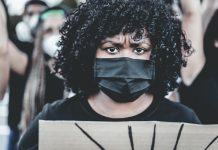We spoke to Elica M. Moss from Alabama A&M University to profile her research on disproportionate air pollution exposure in African-American communities with the Deep South Center for Environmental Justice
Firstly, tell us about your research on disproportionate air pollution exposure in African-American communities with the Deep South Center for Environmental Justice?
At the Deep South Center for Environmental Justice, under the helm of Dr. Beverly Wright, we are continuing to generate monthly COVID-19 infographics from communities in the six Gulf Coast Counties by observing the number of cases and deaths per demographic characteristics and their proximity to industrial facilities emitting pollutants and the amounts of those releases. I have also expanded our research in Alabama beyond Mobile County to include Sumter, Jefferson, Madison, and Morgan counties, which represent various geographic and demographic segments of the State. A year-long comparative analysis of this COVID-19 data is currently in progress. We are also in the midst of planning community workshops on the health impacts of air pollution as a result of a transportation project through one of our vulnerable communities, Africatown, located in Mobile County, AL.
In addition to air pollution exposure, what other environmental problems are you concerned about in relation to African American communities?
African Americans, people of colour and those from low-income communities face many environmental issues in addition to air pollution exposure. One of great concern is the proximity to hazardous waste facilities and landfills often located in communities of colour which in addition to leading to disproportionate exposures to air pollutants, similarly, results in matters related to soil and water quality.
Lead poisoning, specifically from lead-based paint remaining underneath freshly painted surfaces notably in urban areas, is still quite troublesome. Lead poisoning has the most severe effects on children who with long term exposure may have issues such as developmental delays and learning and behaviour problems. In recent years, we have also seen issues of lead contamination in water in cities such as Flint, MI and Newark, NJ, among others.
Additionally, water contamination from pesticide runoff or from private wells is problematic for low-income areas and communities of colour, especially for children who live in rural areas where there is a higher prospect of contamination. Water contamination pertaining to wastewater is substantial as well and will be discussed in more detail in the next question.
When it comes to the ongoing wastewater crisis across the rural South, tropical diseases are impacting those who have no access to basic infrastructure and experience poverty. As a scientist, what do you think should be done to tackle this public health crisis?
There is no easy solution. So, of course, more research needs to be done. When we talk about the wastewater problems in the rural South, I have to reference Lowndes County, AL and other areas of Alabama’s Black Belt that include some of the poorest counties in the United States. This region, which is named because of its rich clay soil is not ideal for septic systems to work properly so they often fail and back up in the yards of the residents. Unfortunately, the residents are the ones who are responsible for purchasing and maintaining their septic systems which often cost more than their annual incomes. The considerable distances to other homes and the fact that most rural counties do not have funds for large sewer systems and wastewater treatment plants is a significant issue.
Furthermore, pollution regulations for septic systems are not as stringent as they are for larger sewer systems and can cause increased contamination which can lead to the presence of parasites such as hookworms and other tropical diseases. In addition to researching the best way to remedy this situation, continued outreach to communities on environmental hazards related to raw sewage and discussing the implications from climate change are imperative. There also needs to be more federal initiatives to help install or maintain septic systems, especially in these areas that cannot financially support the systems, but where the people deserve to live with dignity as human beings and citizens of the United States. I invite everyone to read Waste: One Woman’s Fight Against America’s Dirty Secret by Catherine Coleman Flowers for more information on the wastewater issues in Alabama’s Black Belt.
With regards to the ongoing struggle against COVID-19, non-white communities are suffering disproportionate hospitalisation and death. Do you believe this is linked to air pollution exposure?
Yes, several factors contribute to non-white communities’ struggles with COVID-19. Among them, is the link between these communities and air pollution exposure. A Harvard University study of over 3,000 counties in the U.S. found that higher historical PM2.5 exposures are positively associated with higher county-level COVID-19 mortality rates. Chronic exposure to particulate matter, nitrogen dioxide and ozone from industrial facilities, highways and ongoing construction can lead to diabetes, heart diseases, asthma, lung cancer and other respiratory issues which are risk factors for COVID-19. This is a systemic issue in that most of the communities of colour are located in close proximity to these areas of exposure. Unfortunately, with COVID, people of colour are foundationally at a disadvantage.
In 2021, we expect to deal with shadow pandemics after the COVID crisis is stabilised. These include the trauma of healthcare workers, delayed cancer treatments and the setback to educational development for vulnerable children. What, if any, long-term impacts of COVID-19 do you anticipate?
My greatest concern is the educational development of our young people. There are a plethora of stressors that students endure during normal academic years, but COVID has exacerbated some of these issues. Students need the discipline that comes with structured learning. As a college professor, I’ve seen students juggle more responsibilities during this past year. They are trying to work, while in class, and therefore not thoroughly comprehending what is being taught. Their grades have suffered and conversely, so have their overall GPAs. This has led some students to take a semester off, which may eventually lead to a much longer leave of absence from school. Virtual learning, however convenient for most, leads to self-teaching which is only successfully accomplished by those who are self-motivated.
Please note: This is a commercial profile
© 2019. This work is licensed under CC-BY-NC-ND.















